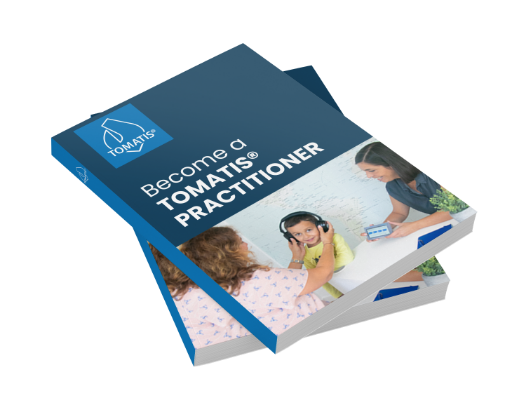Occupational Therapists and the Tomatis® Method
Occupational Therapists work with individuals across all ages, from babies to toddlers, young children to teenagers, adults to seniors. Their objective is to help clients in improving their functional skills and promote independence in various aspects of life, including learning, motor development, play, self-care, work, and socialization. In order to help their clients grow and develop, they employ the Tomatis® Method to improve motor, attention and social skills.
The Tomatis Method could help clients with:
- Balance & Coordination
- Control
- Posture
- Spatial Orientation
- Sensory Integration
- Fine Motor Skills
- Gross Motor Skills
- Cognitive Skills
- Speech and Language
- Self-regulation
- Social Communication
Clients benefit from the Tomatis Method with difficulties associated with:
- Auditory Processing Disorders
- Sensory Processing Disorders
- Autism Spectrum Disorders
- Developmental Delay
- Attention and Focus
- Emotional Regulation
- Cerebral Palsy
- Brain Injury / Trauma
- Down Syndrome
- Dyspraxia
- Some genetic disorders
Why add Tomatis® to your Occupational Therapy Tool box?
- Flexible: The tool is adaptable and can be customized for clients of all ages, ranging from infants to seniors
- Portable: Can easily travel with you to work in homes, schools, centers, jobs
- At-home or Clinic: Can be employed at home or in a clinic setting, by your client alone or with your support.
- Effective: Targets the ear-brain connection to improve speech, voice, language, attention, focus, listening, auditory processing
- Supportable: Designed to enhance and support your practice helping your clients develop and reach their potential
- Affordable: Cost-effective with lasting results for your clients
- Complementary: Can be incorporated as a complementary component in your occupational therapy sessions
- Natural and non-invasive: Stimulates the brain with music rich in harmonics
- Growing Demand: The Tomatis® Method is becoming increasingly popular as more and more individuals seek out alternative approaches to address learning, communication, and behavioral challenges
Hear from your Peers
Maude
Le Roux
Occupational Therapist
United States, South Africa
❝The Tomatis Method plays a crucial role in accelerating the processing of sensory information across different systems, enabling a more mature reconciliation of brain networks in children. This, in turn, allows them to function more effectively. I highly recommend the Tomatis® Method to anyone interested in assisting families in improving their children’s well-being.❞
Jennifer
Roberts
Occupational Therapist
United States
❝We observed that the time taken to achieve functional outcomes on the SIPT test significantly decreased after implementing the Tomatis® Method.❞
Sue
Sonkin
Occupational Therapist
United States
❝For occupational therapists, Tomatis® offers a unique pathway to stimulate the central nervous system, leading to heightened alertness and improved information processing. The results are immensely gratifying, with a vast majority of clients experiencing significant success.❞
Start your journey and request your free „How to become a Tomatis® Practitioner“ documentation
Containing all the necessary details to commence your Tomatis® training as soon as possible
- The Tomatis® Method explained in details
- Its unique and unparalleled technology at your service
- The 7 areas of application for which the Method gets results
- The richness of its community of 4000 therapists around the world with whom you can interact and obtain support
- Advice on how to propose the Method to your clients and integrate it into your protocols
- All the modalities and programs to train in the Method and become a practitioner.

Ask for your free documentation
only intended for professionals



